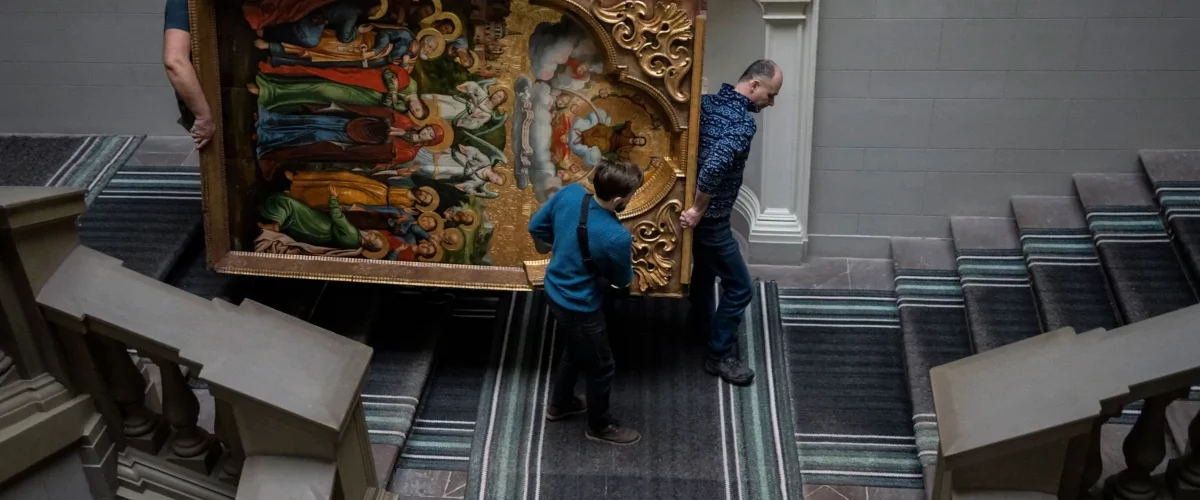In the turbulence of war, human life remains the most urgent and heart-wrenching casualty. Yet, cultural heritage, the collective expression of a nation’s identity and history, also suffers devastating losses. The current conflict in Ukraine brings this reality into sharp relief, particularly for its rich tapestry of historical paintings, a poignant symbol of Ukraine’s artistic legacy. From the ancient iconography in Kyiv’s Saint Sophia Cathedral to the avant-garde masterpieces of the 20th century, these pieces are now at risk.
War Impact and the Fate of Artworks
Conflict inevitably poses significant threats to cultural heritage. Irrespective of the responsible parties, warfare creates precarious conditions for preserving art. Historical landmarks and museums are often caught in the crossfire, suffering damage from bombings, looting, or arson. During periods of instability, priceless artifacts, including paintings, can disappear into the underground market.
Ukraine, home to a rich and varied history of art, has not been immune to these dangers. Since the outbreak of conflict in 2014, numerous reports of damage to cultural sites have emerged. Paintings from numerous eras—from Byzantine-influenced religious works to pieces influenced by European movements such as Impressionism and Cubism—have been at risk. Many paintings remain in areas of intense conflict, such as Donetsk and Luhansk, exacerbating these risks.
Preservation Efforts
In the face of such risks, individuals and organizations both within and outside of Ukraine have taken substantial steps to protect and preserve these priceless artifacts. Ukrainian museums, often with international assistance, have implemented several measures to protect their collections. These range from physically relocating artworks to safer areas, developing digital archives for documentation, and reinforcing security measures to prevent looting.
Many museums in safer regions have opened their doors to store artifacts from war-torn areas, an act of cultural solidarity that safeguards these treasures. For instance, the Lviv National Art Gallery has hosted numerous displaced paintings.
International organizations have also played a significant role. UNESCO, the Blue Shield International, and the International Council of Museums have all worked closely with Ukrainian institutions to provide resources and expertise. They have offered training to local museum staff in risk management and emergency planning and facilitated the evacuation of artwork where necessary.
Digital Preservation
Digital preservation has emerged as an important tool in the fight to protect Ukraine’s cultural heritage. High-resolution photography, 3D scanning, and other digitization techniques are being used to create virtual replicas of artworks. While these digital archives cannot replace the original paintings, they offer a form of insurance against total loss and ensure future generations can still experience these works.
One such project is the Ukrainian Art Library, a digital repository of Ukrainian art that aims to provide worldwide access to Ukraine’s art heritage. It has already digitized thousands of works, offering a beacon of hope amidst the bleakness of war.
Conclusion
War poses a bleak challenge to the preservation of Ukraine’s artistic heritage, including its rich collection of paintings. However, the response of both Ukrainian and international communities, utilizing technology and leveraging international cooperation, gives reason for hope. In preserving these works, we ensure that the vibrant tapestry of Ukrainian culture endures, reminding us of the resilience of the human spirit, even amidst conflict. While it is a battle fraught with risk and potential loss, the fight to preserve these paintings is a testament to the universal value of cultural heritage and the enduring power of art.
